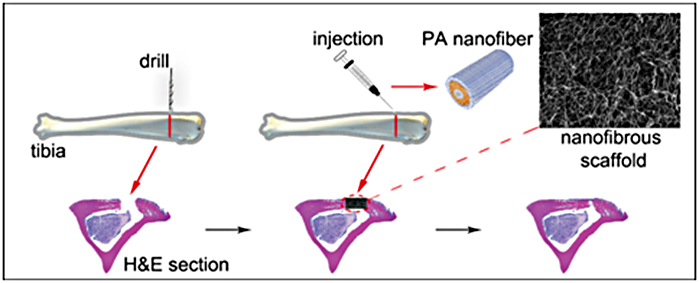Nanofiber Scaffold for Utility in Bone Tissue Regeneration :

Many variables serve to alter the process of bone remodeling and diminish regeneration including the size and nature of the wound bed and health status of the individual. To overcome these inhibitory factors, tissue engineered osteoconductive scaffolds paired with various growth factors have been utilized clinically. Bone is a highly vascularized and dynamic tissue that has an innate capacity for healing after injury. However, there are many variables that serve to alter the process of bone remodeling that diminish regeneration including the size and nature of the wound bed and chronic medical conditions. To overcome these inhibitory factors, tissue engineered, osteoconductive scaffolds paired with various growth factors have been utilized clinically in orthopedics and craniofacial surgery. However, many limitations still remain with commercially available products (e.g. rhBMP2) which can lead to rampant inflammation associated with injury or clinical intervention, ectopic bone formation, and ultimately graft failure. The ability for a nanofiber scaffold (Talymed), currently approved to augment cutaneous wound healing, to accelerate growth factor (rhBMP2) generated bone healing compared to the traditional absorbable collagen sponge (ACS) delivery system. To assess this healing after craniofacial fracture, 155 adult wild-type mice were randomly arranged in 16 groups by time, 4 and 8 week, and treatment, ACS or Talymed, loaded with control, low, medium or high dosages of rhBMP2. At experimental end points, skulls were subjected to microCT, biomechanical, and histological analysis to assess bone regeneration.
The use of Talymed within the defect site was found to decrease the bone volume, bone formation rate, and alkaline phosphatase positivity compared to ACS/rhBMP2 combinations. Interestingly, the Talymed regenerated bone, although less, was found to have a greater hardness value than that of bone within the ACS groups. However, the difference in bone hardness between scaffolds was not detectable by 8 weeks.

No comments:
Post a Comment